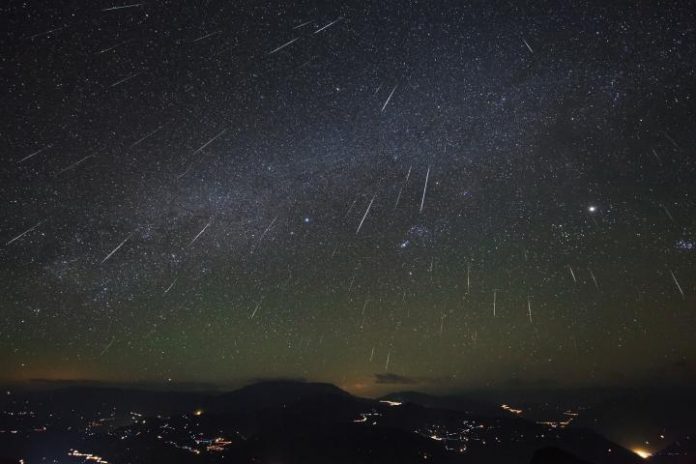The Geminid meteor shower is one of the most spectacular nighttime sky shows of the year. When debris from the asteroid 3200 Phaethon burns up in the night sky, it creates bright, long-lasting streaks across the sky. It’s something to worth going outside for on a cold winter night, and is worthy of the Google Doodle posted Thursday to celebrate it.
The peak of the meteor shower begins Thursday night, and lasts through Friday night. You may be able to one or two meteors per minute, if you have access to a dark-enough sky. This meteor shower is perhaps only rivaled by the Perseid meteor shower in August in the number of meteors you can see per night.
The Geminids are so named because they appear to radiate outward from the constellation Gemini. But they are created from the trail of a very peculiar asteroid named 32000 Phaethon. Like its namesake in Greek mythology, 3200 Phaethon comes very close to the sun. (In Greek mythology Phaeton is the son of either Apollo or Helios, depending on the tale. They’re gods associated with the sun.) Every 523.5 days it passes in between the space between Mercury, our innermost planet, and the sun.
The asteroid is small — just 3 miles wide — and rocky. It also behaves much more like a comet than an asteroid: 3200 Phaethon forms a tail, and is sometimes referred to as a “rock comet.” That tail then leaves a trail of debris, and that debris is what the Earth is plowing into Thursday, and incinerating in the sky.
Those asteroid bits are denser than typical meteor kindling, which means they move more slowly across the sky as they burn. They also tend to be a bit brighter than the typical meteor.
Thursday and Friday will be great nights to watch the meteor shower, as the moon will set before midnight. With the moon below the horizon, the night sky will be extra dark, and the meteors will shine brightly. The very best time to watch, Sky and Telescope magazine reports, will be right before dawn on Friday, December 14. That’s the peak of the peak.








